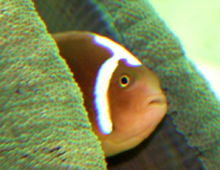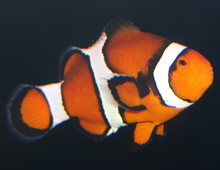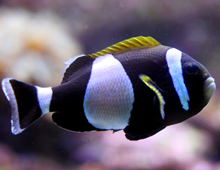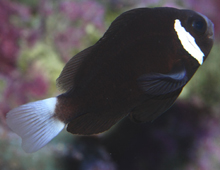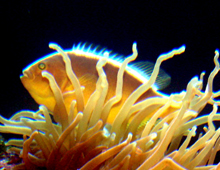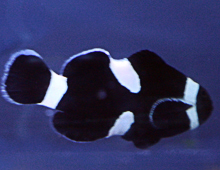
Also known as the Starck’s demoiselle, the Starki damsel, is found in the northern and southern parts of the West Pacific. These brightly colored reef dwellers are commonly kept in aquariums and are extremely hardy fish. Like other members of the family Pomacentridae, they can be very territorial, despite their small size. They can be seen fiercely defending a crevice, or hiding quietly under a coral or clam.

